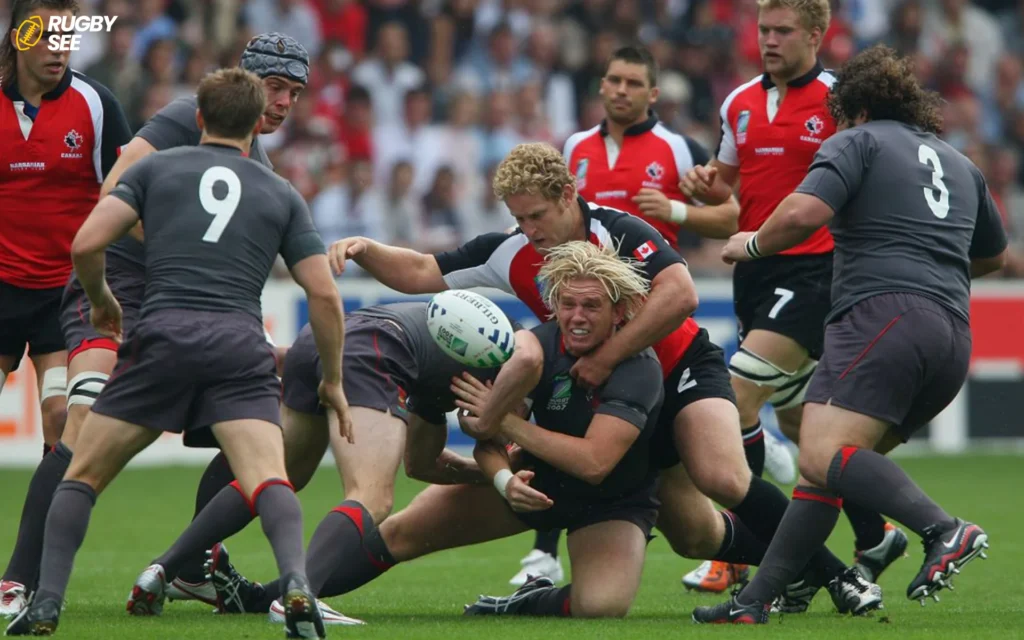In the high-impact, physically demanding world of rugby, player safety is a paramount concern. Among the array of protective gear, the scrum cap stands out for its role in safeguarding players from head injuries and the notorious ‘cauliflower ear.’ But what exactly are scrum caps made of, and how do their materials contribute to both protection and performance? This comprehensive exploration delves into the construction of scrum caps, revealing the technology and thought process behind these essential pieces of rugby gear.
The Essential Purpose of Scrum Caps
Before dissecting the materials used in scrum caps, it’s crucial to understand their primary purpose. Designed to mitigate the risk of superficial head injuries, scrum caps offer a layer of protection during scrums, rucks, and mauls. They are particularly valued for preventing abrasions, cuts, and the exacerbation of ‘cauliflower ear’ – a condition resulting from repeated trauma to the ear that can cause permanent disfigurement.
Core Materials Used in Scrum Caps
Foam Padding: The Heart of Protection
The most critical component of a scrum cap is the foam padding. This padding is usually made from ethylene-vinyl acetate (EVA) foam, a material chosen for its unique combination of lightness, flexibility, and shock absorption properties. EVA foam can disperse the force of impacts more evenly across the surface of the cap, reducing the pressure on any single point of the head or ear.
Outer Fabric: Durability Meets Comfort
The outer layer of a scrum cap is typically made from durable, breathable fabrics designed to withstand the rigors of the game while ensuring player comfort. Polyester and spandex are commonly used for their ability to resist tearing and stretching. These materials also have moisture-wicking properties, keeping sweat away from the skin and allowing for better temperature regulation during play.

Ventilation Systems: Keeping Cool Under Pressure
Modern scrum caps feature strategically placed ventilation holes or mesh panels made from synthetic fabrics. These elements are crucial for air circulation, helping to dissipate heat and reduce sweat accumulation. Effective ventilation ensures that players can maintain focus and performance without being distracted by discomfort or overheating.
Chin Straps and Closure Systems: Securing the Fit
A secure fit is vital for ensuring the scrum cap stays in place during the game. Chin straps, often made from nylon or similar sturdy materials, are adjustable and sometimes padded for extra comfort. Velcro closures are also common, allowing for quick adjustments and a snug fit that can be tailored to the individual player’s head shape.
The Evolution of Scrum Cap Technology
The materials and design of scrum caps have evolved significantly since their inception. Early versions were rudimentary at best, offering limited protection and comfort. Today, manufacturers leverage advances in materials science and ergonomic design to produce scrum caps that meet the needs of modern rugby players. Innovations include the use of gel inserts for enhanced shock absorption and the development of ultra-lightweight materials that do not compromise on protection.
The Importance of Certification and Standards
When discussing the materials of scrum caps, it’s essential to mention the importance of safety standards and certifications. Reputable manufacturers ensure their scrum caps meet specific regulations set by rugby governing bodies, such as World Rugby. These standards dictate the thickness of the padding, the cap’s coverage area, and its retention system, ensuring that all scrum caps provide a baseline level of protection.
The Role of Comfort and Player Feedback in Design
As the design of scrum caps continues to evolve, manufacturers increasingly focus on player comfort and feedback. The reality of wearing scrum caps in diverse weather conditions, from the scorching heat of Australian summers to the chilly winds of Northern European winters, demands materials that can adapt to both the player’s body and the environment. The integration of antimicrobial fabrics is another advancement, addressing concerns over hygiene and the prevention of skin irritations or infections, which are crucial for players who wear their caps for extended periods.

Sustainable Materials: The Future of Scrum Cap Production
Sustainability is becoming a focal point in the production of sports equipment, including scrum caps. Innovations in eco-friendly materials that do not compromise the protective qualities of scrum caps are on the rise. Manufacturers are exploring the use of recycled plastics, biodegradable foams, and organic fabrics to reduce the environmental impact of their products. This shift not only resonates with the growing environmental awareness within the rugby community but also sets a new standard for the sports industry at large and if you want to know about invention of American Football read When was American football invented.
Customization and Personal Expression
The materials used in scrum caps also allow for a degree of personalization and team identity. With advances in printing and fabric technology, players and teams can customize their scrum caps with logos, team colors, and even individual names. This aspect of personal expression strengthens team unity and allows players to wear their colors with pride, all while benefiting from the protective features of the scrum cap.
Educating the Rugby Community on Scrum Cap Maintenance
Understanding the materials of scrum caps extends to knowing how to care for them. Proper maintenance is essential to ensure the longevity and effectiveness of the cap. Manufacturers often provide specific instructions for washing and drying scrum caps, usually recommending cold water washes and natural drying to preserve the integrity of the foam padding and fabric. Educating players on these best practices is part of fostering a culture of safety and care within the rugby community.

The Psychological Impact of Wearing Scrum Caps
Beyond the physical protection scrum caps provide, there’s also a psychological aspect to consider. For many players, wearing a scrum cap is a ritual that prepares them mentally for the game. The sense of security and readiness it offers can boost confidence on the field, contributing to overall performance. This psychological benefit, coupled with the physical protection scrum caps offer, underscores the multifaceted value of this essential piece of rugby gear and if you want to know about Rugby Field Goals read Does Rugby Have Field Goals? Understanding Rugby Scoring.
The humble scrum cap, with its carefully chosen materials and sophisticated design, is a testament to the rugby community’s commitment to player safety. EVA foam, durable fabrics, advanced ventilation systems, and secure fitting mechanisms all play a part in creating this indispensable piece of protective gear. As rugby continues to evolve, so too will the technology behind scrum caps, ensuring that players can take to the field with confidence, protected by the latest in safety innovation.










